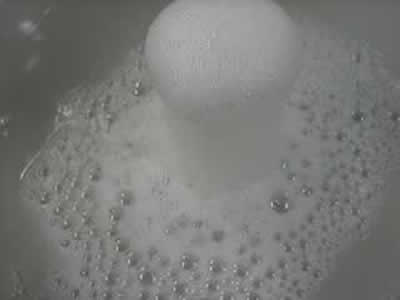Greenhouse Effect
Carbon dioxide in our oceans.
Once dissolved in water, only 1% of the CO2 reacts to form carbonic acid according to the equation below.
CO2(aq) + H2O(l) <=> H2CO3(aq)
An equilibrium is soon established between the dissolved carbon dioxide and carbonic acid. The set of related reactions that now take place are shown on the right.

Carbonic acid is a very weak acid. A small percentage of molecules will ionize in a two step process, as shown on the right, to form carbonate (CO3-2) ions. An equilibrium is established between dissolved carbon dioxide and the carbonate ion.
The carbonate anion reacts with metal cations in seawater, such as Ca2+, to form solid calcium carbonate (limestone). Most carbonates are insoluble.
As more calcium carbonate is precipitated extensive deposits of limestone are formed. This traps the carbon in huge rock formations deep underground.
H2O(l)+ H2CO3(aq)<=> HCO3-(aq)+ H3O+(aq)
H2O(l)+ HCO3-(aq)<=> CO3-2(aq)+ H3O+(aq)
Although the calcium carbonate is insoluble it will readily dissolve in acidic solutions. The carbonate (CO3-2) ion behaves as a Lowry Brønsted base according to the equation on the right.
The carbonic acid dissociates to produce carbon dioxide gas and water according to the equation on the right.
